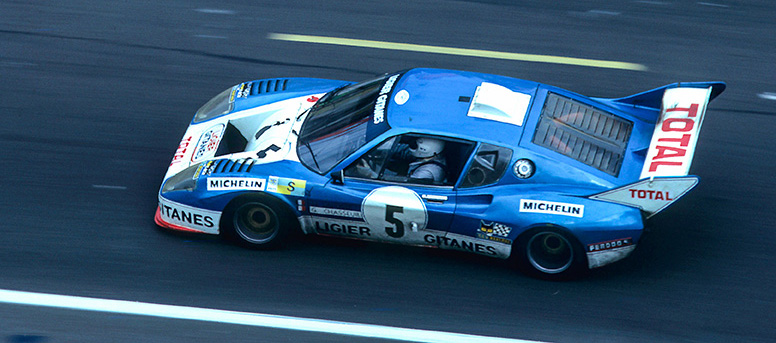
1975 24 Hours of Le Mans, Ligier lays down a marker!
Yet another month of June without the 24 Hours of Le Mans. The pandemic left no choice and the event had to be postponed to 21st and 22nd August. While awaiting the summer, time to relive the 14th and 15th June 1975 and Ligier's second place overall in the greatest endurance race in the world!
The JS2 defended the French constructor's colours in the Sarthe. Derived from the JS1, but this time in the form of a series production model, the GT really burst on the scene in 1972. As the seasons unfolded and with the help of the tweaks made by Michel Beaujon, who had replaced Michel Têtu, the car showed its pace in the sporting arena, in particular in the Tours de France Automobile, but failed to score a noteworthy result in the prestigious 24 Hours of Le Mans.
That year, 60 cars flocked to the track including three Ligier JS2s ready to take on Mirages, Porsches and Ferraris. Two Ligiers were powered by the Ford Cosworth DFV engine and the third by the V6 Maserati. They were driven by three seasoned duos: Jean-Louis Lafosse and Guy Chasseuil in #5, Henri Pescarolo and François Migault in #6 and the two Jean-Pierres, Beltoise and Jarier, in #97, the singleton Maserati- engined car. But the ambience in the Ligier camp was anything but serene. The #97 was much heavier than its rivals. Concerning the other two cars with the Ford engine, Michel Beaujon remembers: “Everybody said we were crazy to put a Cosworth in a closed car. When Guy Ligier called Chasseuil to offer him the drive at Le Mans he answered yes provided he had the car with the Maserati engine! ‘That's tough luck,' Guy replied, ‘because you've got the Cosworth!' He was confident. He said to me: ‘If we achieve anything it'll be with the Cosworth!' He was right. #97 had to retire very quickly and #6 went out shortly after half distance. Only the #5 JS2 with the Ford engine crossed the finishing line.“But one of the problems of the Cosworth was the vibrations,” points out Beaujon. “They were so extreme that if you put a coin on the roof when you were just warming up the engine, you had the impression that the coin didn't touch the roof because the vibrations were so extreme that it was jumping all over the place! So we tried to foresee everything that might happen because of the vibrations and beefed up the car as best we could. And nothing broke!” What was even better, Chasseuil-Lafosse finished second overall only a lap behind the winning Mirage GR8 driven by Derek Bell and Jacky Ickx.
“We just missed out on victory,” regrets the Ligier engineer. “We were too careful. Chasseuil stopped very early on at his pit saying that the gauge indicated there was no oil pressure. We should have reacted and told him: forget the gauge and get back out there! Because a Cosworth without oil pressure only does a few metres and then explodes! Instead of doing that we wasted two laps trying to find the source of the problem before taking the decision to let him rejoin; and the next day we lacked just a single lap. We would have won!”
But would a victory have prolonged Ligier's involvement in endurance? Nothing is less sure. In fact, the die had already been cast. Supported by former Matra personnel and with the backing of the Seita, Ligier was already looking to Formula 1.
However, the Ligier saga in endurance didn't stop there. And 39 years later in 2014, a new Ligier, this time a sports prototype, the Ligier JS P2, followed in the footsteps of the JS2 on its first outing in this race. It finished second in the LM P2 category in the 24 Hours of Le Mans, the start of a brilliant career!
Photo credit: DPPI Images